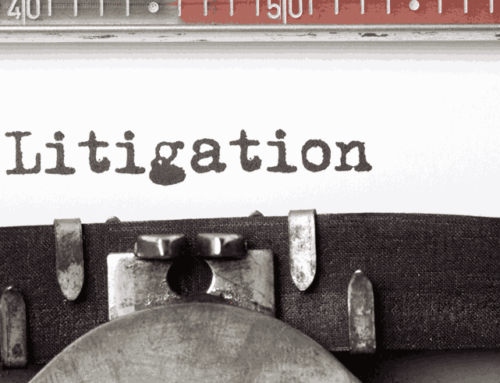Have you ever felt like you need a secret decoder ring to understand legal documents? Don’t worry; you’re not alone. Legal drafting can be a real head-scratcher for those who aren’t legal experts. In this guide, we’ll help you unlock the mysteries of legal drafting and show you why it matters. We’ll emphasize the importance of clear, precise language in legal documents and share tricks for creating robust, scrutiny-resistant documents. Let’s start this journey to demystify legal drafting and understand why it’s so crucial.
What is Legal Drafting?
Legal drafting refers to the process of creating, editing, and finalizing legal documents. These documents can encompass contracts, agreements, wills, deeds, and more. Legal drafting primarily communicates binding rights, obligations, and responsibilities among involved parties. Legal drafting encompasses various documents like contracts, wills, leases, statutes, pleadings, and judgments, among others. Each type of document serves a specific legal function and requires distinct language and formatting.
The Role of Legal Drafters
Who Are Legal Drafters? Legal drafters are professionals, often lawyers or paralegals, with expertise in creating and revising legal documents. They play a pivotal role in the legal process, ensuring that documents accurately reflect the intentions of the parties involved. Legal drafters interpret legal needs, laws, and requirements to create clear, comprehensive, and enforceable documents. Their skills include research, detail, writing, and issue anticipation.
The Significance of Legal Drafting

Legal drafting can seem complex, with obscure terms and convoluted sentences prevailing. In reality, it’s a highly precise and methodical practice, and its significance cannot be overstated. In this section, we’ll dive into “The Significance of Legal Drafting.”
Legal drafting isn’t just about creating documents; it’s about crafting enduring and robust documents. Here’s why it’s so significant:
- Avoiding Ambiguity and Misinterpretation: Legal documents serve as the foundation for countless agreements and transactions. They outline the rights, responsibilities, and expectations of all parties involved. Ambiguity and vague language can lead to confusion, disputes, and even litigation. Think of a well-drafted contract as a roadmap–it provides clear directions and minimizes the chances of getting lost in a legal maze.
- Legal Enforceability: The strength of a legal document lies in its enforceability. When disputes arise, the courts must interpret and apply the terms of the document. A well-drafted document reflects parties’ intentions, and endures scrutiny, while a poor one invites varied interpretations, hindering enforcement.
Consider, for instance, a will. A well-drafted will clearly outline the deceased person’s wishes regarding the distribution of assets. This not only ensures that their desires are respected but also minimizes the potential for family disputes. Legal drafting plays a pivotal role in contract law, as well. In the business world, well-drafted contracts provide a stable foundation for transactions. They detail payment, delivery, dispute resolution, simplifying obligations, and recourse in case of a breach for the parties involved.
Tips for Effective Legal Drafting
In the intricate world of legal drafting, precision and clarity reign supreme.

- Planning and Preparation
Successful legal drafting begins with careful planning and preparation. Before you even put pen to paper (or fingers to keyboard), it’s essential to understand the purpose of the document and identify your audience. Are you drafting a contract for a business deal, a will, or perhaps a legal brief for court? Each of these documents requires a unique approach. Legal drafters must research laws, regulations, and document-specific requirements. A detailed outline aids organization and completeness in the drafting process.
- Plain Language
The legal profession has been increasingly embracing the use of plain language in legal documents. This means simplifying complex legal concepts and terminology to make documents more accessible to non-lawyers. While some legal jargon is necessary, excessive use can hinder understanding. A well-drafted document should be comprehensible to its intended audience. Complex writing may require simplification if self-interpretation becomes necessary. Remember, the goal is to convey information, not to showcase your extensive legal vocabulary.
- Review and Revision
Legal drafting is rarely a one-and-done process. It’s iterative, and revision is a critical step. After drafting, take the time to review your work with a critical eye. Are there any ambiguities or inconsistencies? Have you properly defined any terms or concepts that might be unfamiliar to the reader?Seek feedback from colleagues or supervisors, and don’t hesitate to revise as necessary. Proofreading is also vital to catch any grammatical or typographical errors, as these can affect the document’s credibility.
Tools and Resources for Legal Drafting

- Software and Templates
Legal drafting software can significantly streamline the process. These tools offer templates for various legal documents, making it easier to draft contracts, agreements, wills, and more. Such software often includes features like document assembly, which allows you to customize templates to your specific needs. Additionally, it can help ensure that your documents adhere to current legal standards and regulations. Templates, on the other hand, are pre-designed documents that provide a foundation for drafting. While they don’t offer the same level of customization as software, they can save considerable time and effort. Many legal websites offer free or paid templates that you can download and adapt to your requirements
- Legal Research
In-depth legal research is an integral part of legal drafting. Access to up-to-date legal resources is essential. Online legal databases, law libraries, and legal research platforms are valuable tools for legal drafters. Resources offer access to statutes, case law, regulations, and commentary, keeping your documents current in the legal landscape. For legal updates, use research platforms with auto-updates and notifications for relevant legal changes. Keeping your knowledge current is crucial to effective legal drafting.Tools like software, templates, or research aids don’t replace your legal expertise. Combine them with your knowledge and skills to create precise and legally sound documents.
- Legal Writing Guides
Legal writing guides and manuals can be immensely beneficial. They offer guidance on drafting techniques, common pitfalls to avoid, and best practices for clear and effective legal communication. Some well-regarded legal writing guides provide tips on sentence structure, word choice, and formatting. Legal writing guides are valuable references during drafting, ensuring documents are legally sound and reader-friendly. Incorporating these tools and resources into your legal drafting process can enhance your efficiency and effectiveness. Keep in mind that, as a legal drafter, your knowledge and judgment remain at the core of the process.Tools support clarity, consistency, and legality in legal documents. Future insights and tips will enhance your legal drafting skills.
Conclusion
As you embark on your own journey into the realm of legal drafting, remember that mastery is an ongoing process. Each document you draft is an opportunity to refine your skills, incorporating the principles, techniques, and tools we’ve explored here. Dedication and practice lead to proficient legal drafting, creating documents of enduring quality for a just and orderly society. As you draft your next contract, will, or brief, remember you wield the keys to justice and clarity. The world of legal drafting awaits your skill, dedication, and expertise.





